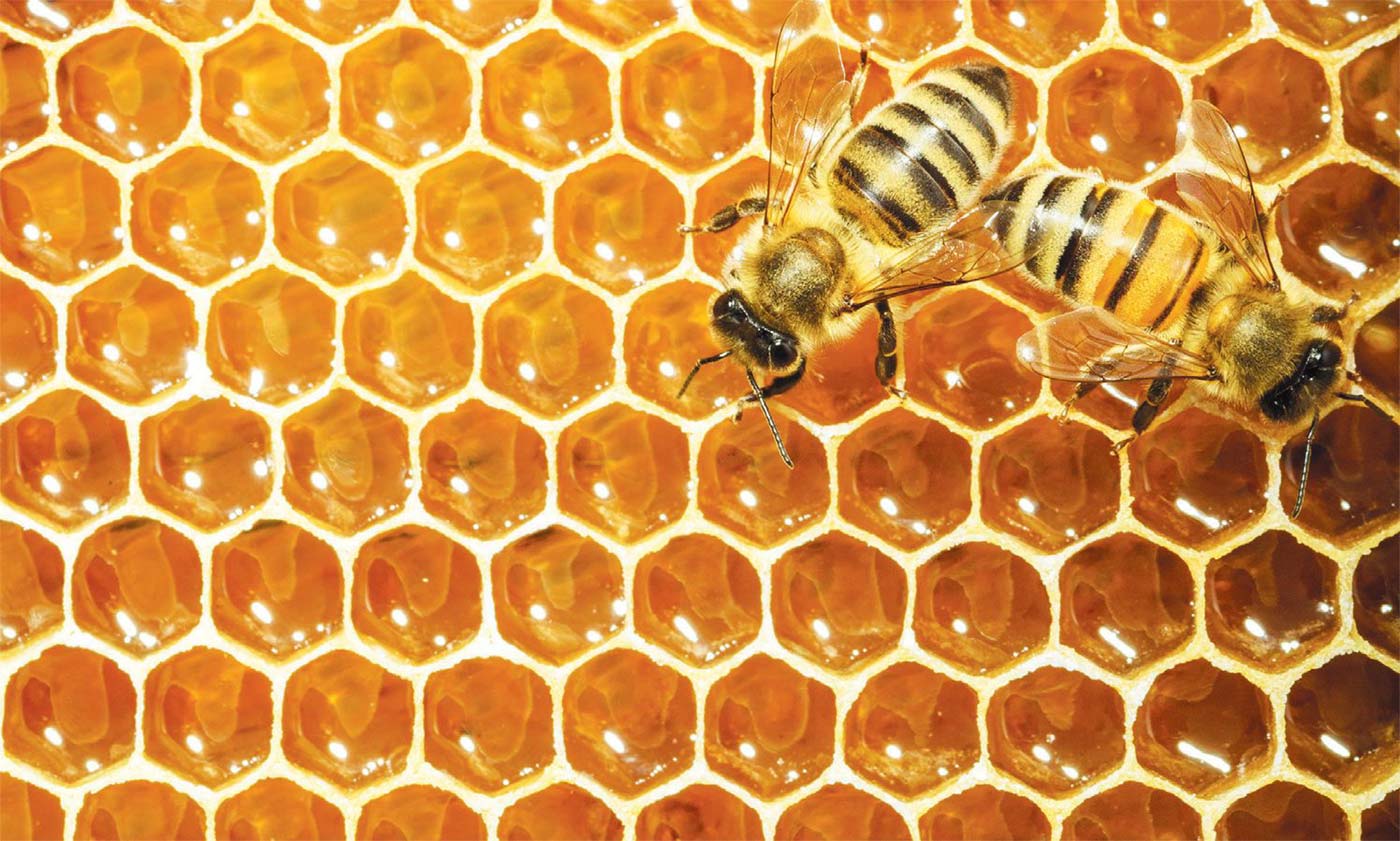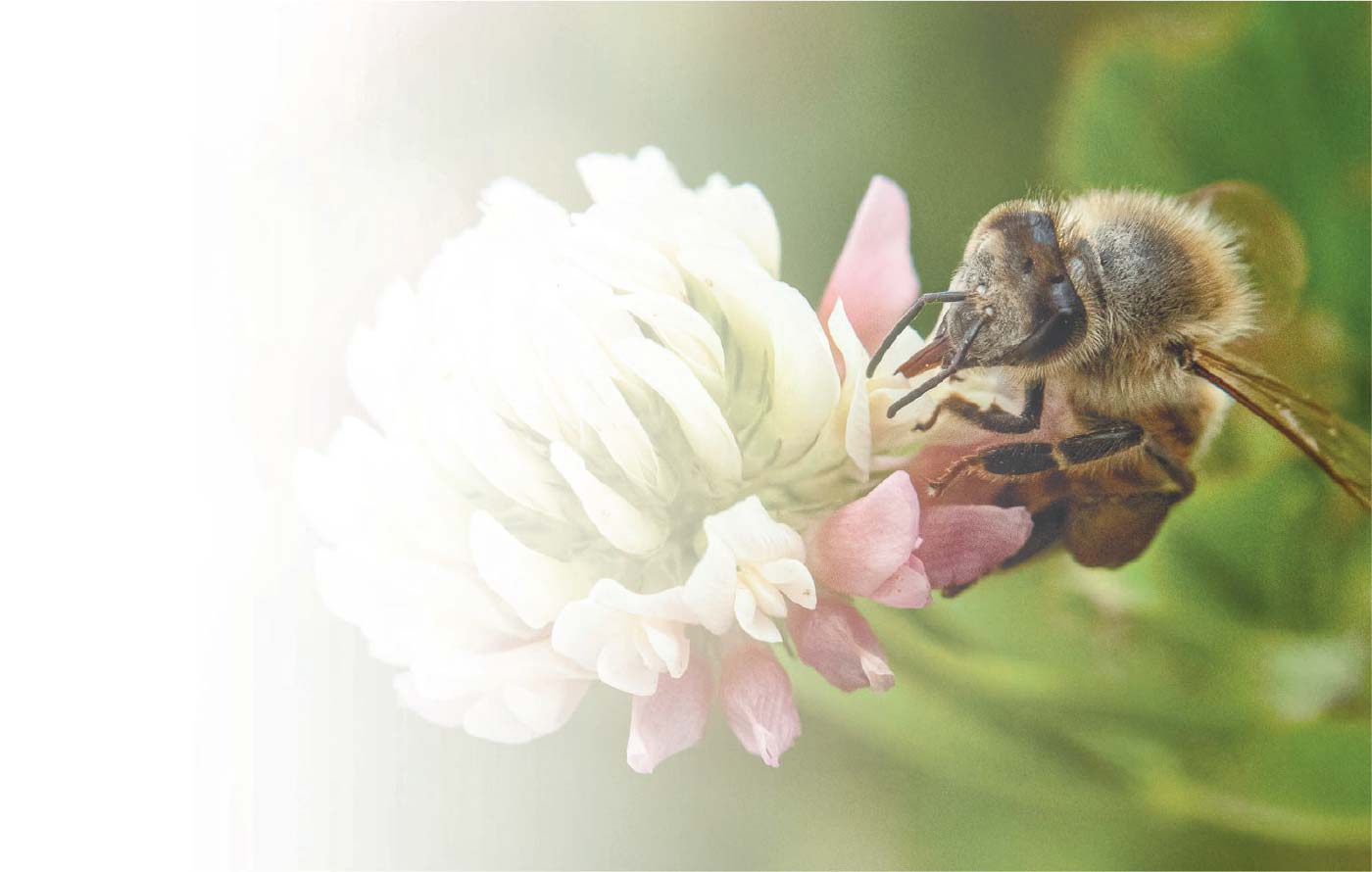Busy as a Bee
COURTESY VERMONT BEEKEEPERS ASSOCIATION
CONTRIBUTED BY DAVID AMBROSE AND CHARLES FEREE
Vermont has long been known for its innovative beekeepers and sweet pastures. The 1868 U.S. agriculture survey shows Vermont as being, as it is now, the leading honey-producing state in New England with 12,000 to 15,000 hives producing from 400,000 to 1,000,000 pounds of honey annually. Because of the types of plants that grow in Vermont’s sweet soils, our honey is characteristically mild flavored and light colored. But beyond flavor and color, Vermont honey is a tradition worthy of great pride and praise.
Many people, honey lovers among them, are unclear as to what honey is and how it is made. Simply stated, honey is a concentrated solution of simple sugars, mostly fructose and glucose manufactured by honeybees from the nectar of flowers. The foraging honeybee draws nectar up from the host flower’s nectar glands and stores it temporarily in her honey crop. During the return flight to the hive, she adds enzymes to the nectar that begin to break down its sucrose into simpler sugars.
Once home, the field bee gives these contents to the hive bees, which store them in the cells of the colony’s wax combs. At this point the unripened honey has a water content of between 50 and 70 percent, and would spoil if left as is. The honey must be protected from deterioration to be of use to a hive of bees, which may store it for months or even years before it needs it. So the bees quickly reduce the moisture to less than 18 percent by fanning their wings to circulate air throughout the hive. When the proper honey density has been reached by this process of evaporation, the bees seal the finished product in cells with a wax capping and the job is done. Honey supplies the carbohydrate (energy) portion of the bees’ diet. Pollen, also collected from the flower and stored like honey, provides the bees with protein.
It is interesting to notice in Vermont, the wants of the bee are met from early spring until late autumn. Fieldwork for the honeybees begins in April when—if the weather cooperates— you will see them probing into the silky catkins on pussy willow bushes and swamp alders. Maple syrup producers have only recently pulled their taps from the sugar maple trees, when the bees are beginning to visit the small flowers of these trees and their soft maple cousins. The first heavyish nectar flow of the spring comes from the dandelion bloom that can yield as much as 60 pounds. Most of these spring honeys are left in the hive to fuel the rebuilding of hive populations, which drop drastically during the winter. The same is true of the flow from Vermont’s apple trees, although pure apple honey—in the rare year when the beekeeper can extract a little—is exquisite; it has the delicate taste and scent of the apple flowers themselves.
The main event for many beekeepers begins in mid-June with the onset of the clover flow. For about two weeks, various species of clover grown as feed for dairy cows flower and, especially in the hot, humid days of early summer, produce tremendous quantities of nectar. Hives on platform scales have shown 12-pound gains in a single day as the bee yard hums with activity. It is the clovers and the close relatives in the legume family of plants that have turned Vermont into a land of milk and honey, and clover honey—so rich and smooth—is a special favorite.
Alsike, the queen of clovers, is a major component of good hay. Tallish, with large white heads tinged with pink, it thrives in sweet clay soils such as those found in the Champlain Valley. Some beekeepers have estimated that an acre of alsike will produce 500 pounds of honey in a good season. The frenzy of the clover flow has usually subsided in the bee yard by the Fourth of July, when the first cut of hay is down and in the barns, and by this time the better part of a hive’s surplus may have been made.
Honey from the beautiful basswood tree is next. A 6- to 10- day flow in early July (again, not to be depended on every year) produces a fine honey, light colored and slightly minty. The purple flowers of alfalfa, the world’s most widespread forage crop, is grown on farms throughout Vermont and can attract bees in July if conditions are right, and if farmers don’t cut and bale it before it blooms. Many wildflowers, vetch, milkweed, sumac, and several mint varieties round out the summer crop and lend a bit of piquancy to it.
As summer winds down, thick stands of goldenrod and aster appear in just about every corner of the state to signal an end to the summer. This is one of a typical year’s biggest flows, but because fall honey is often a bit darker and stronger flavored than earlier honeys, most beekeepers leave it in the hive. It’s going to be about six months before the bees will be able to dine out in the fields and forests again, and each hive will need from 60 to 90 pounds of stores to get it through the winter. So ends the chronicle of one honey season.

BEE FACTS
The state insect of Vermont is…you guessed it, the honeybee.
The queen can lay about 1,500 eggs per day during the season.
The honeybee is the only insect that produces a food eaten by humans.
The ancient Egyptians and other civilizations used honey as food and medicine.
Honeybees fly at up to 15 miles per hour.
Bees are important because they pollinate approximately 130 agricultural crops in the United States, including fruit, fiber, nut, and vegetable crops.
Bees have 5 eyes.
The honeybee has 4 wings; the front and rear wings hook together to form one big pair of wings and unhook for easy folding when not flying.




